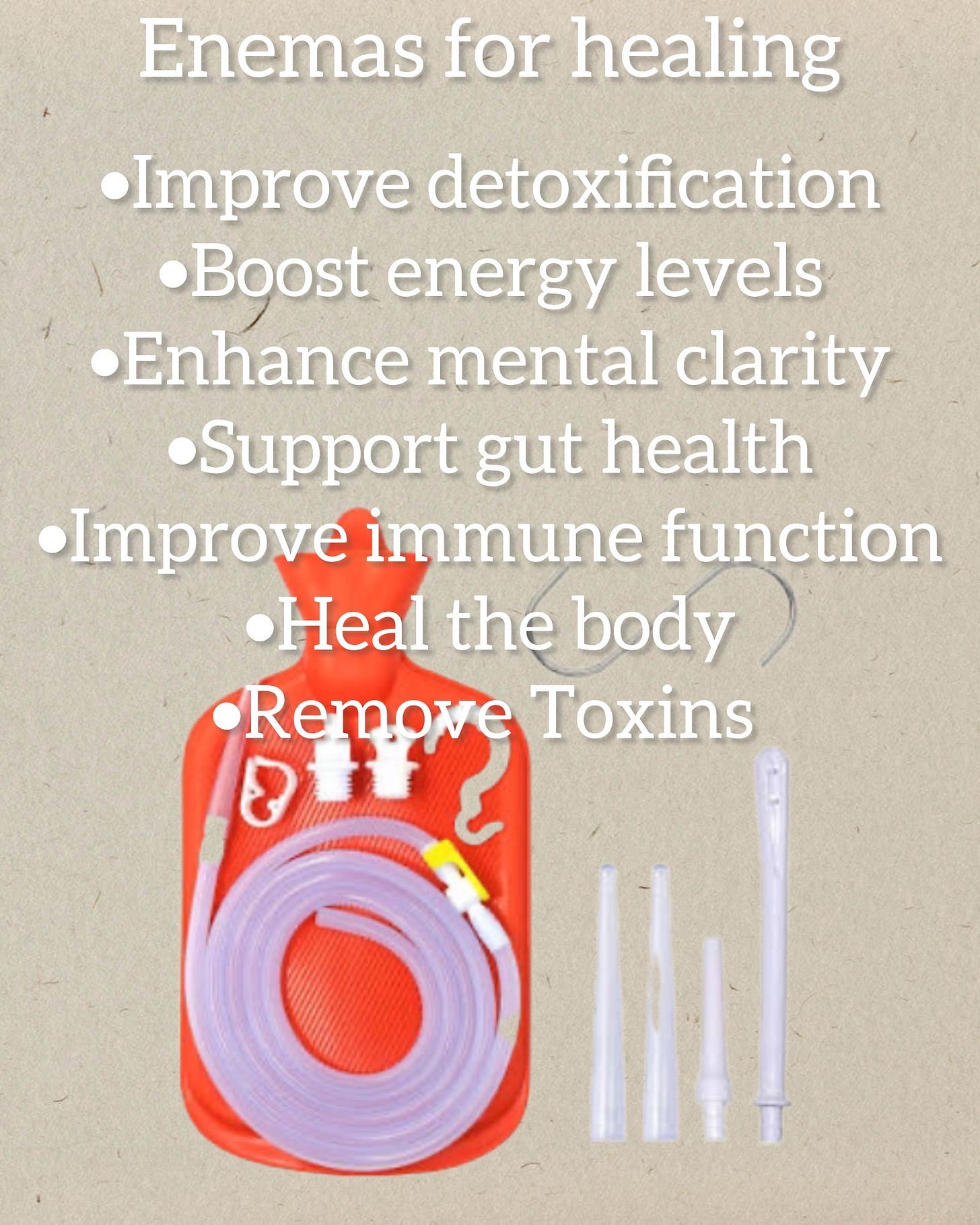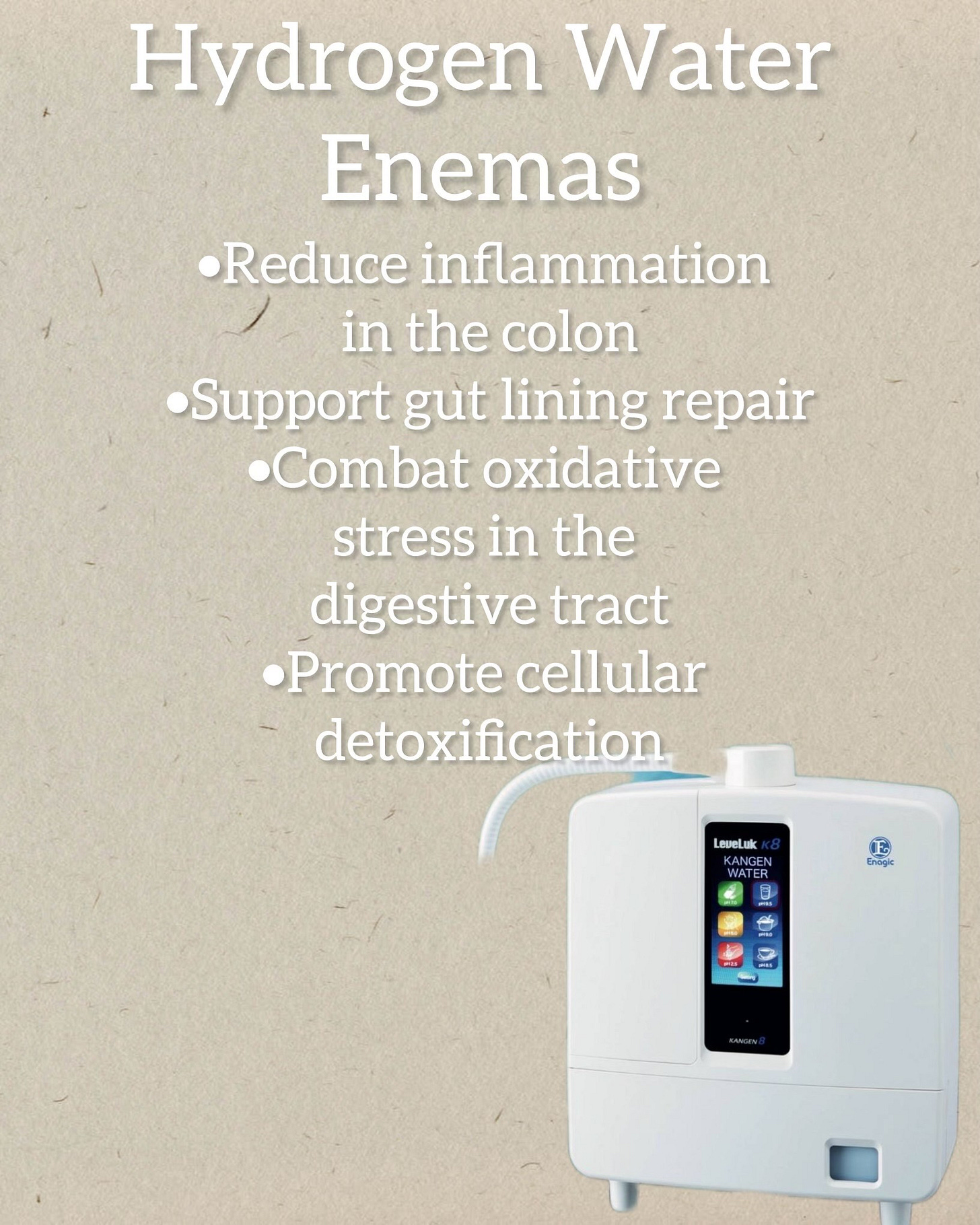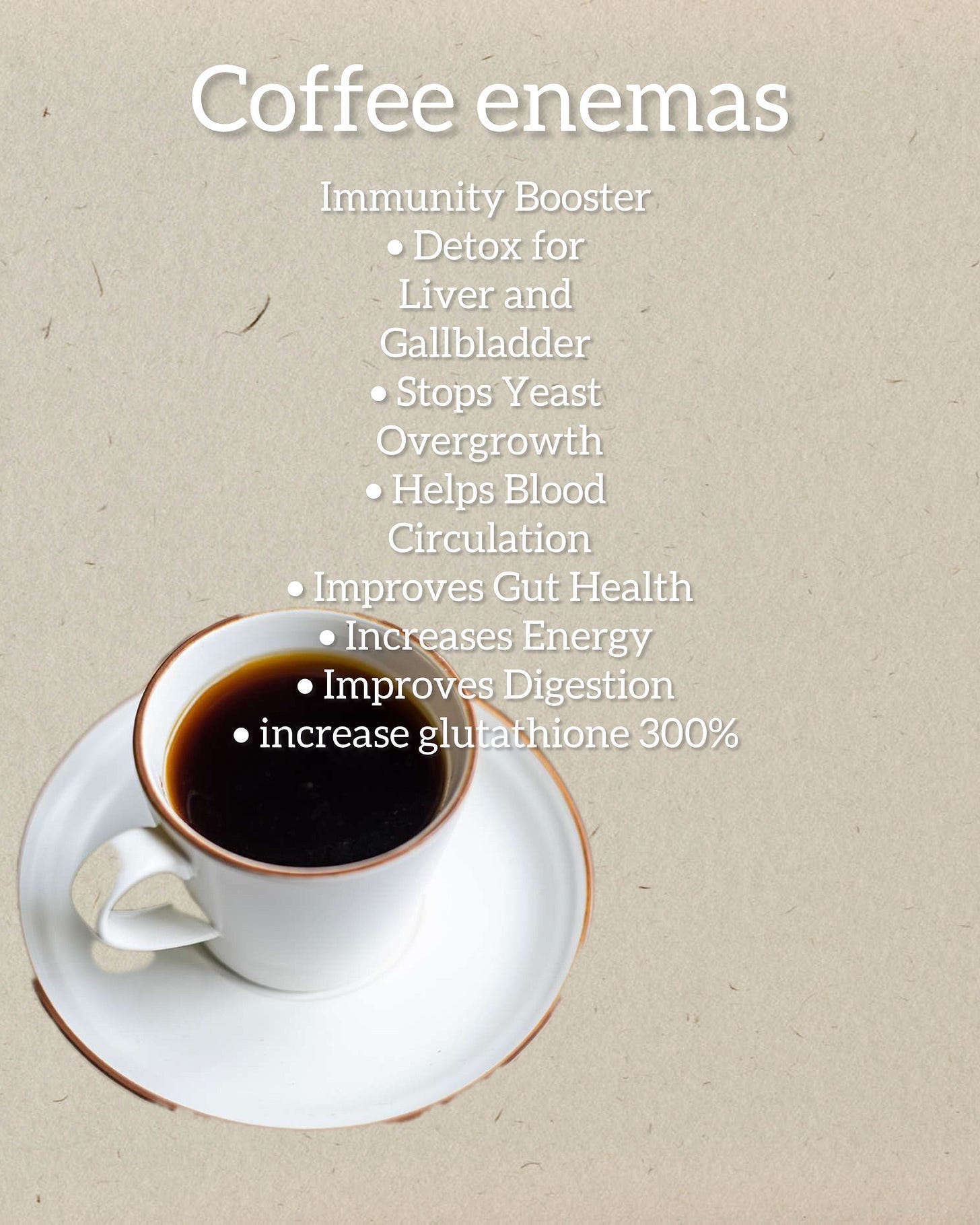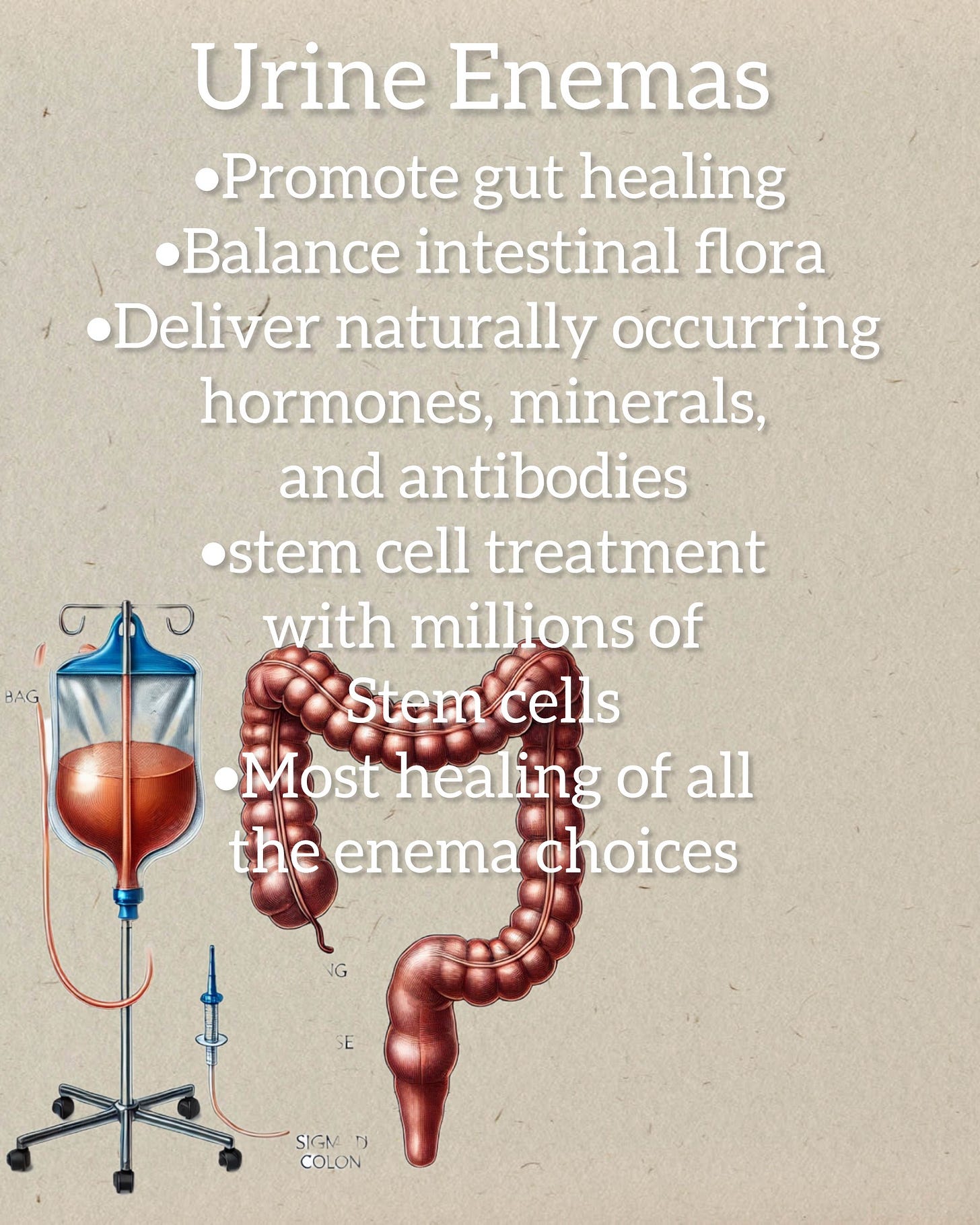The History and Health Benefits of Enemas
Enemas have been used for centuries as a therapeutic and cleansing practice. From ancient civilizations to modern wellness trends, this method has remained a trusted way to promote digestive health and overall well-being. While traditional enemas typically involve saline or water, alternative solutions like hydrogen water, coffee, urine, and chlorine dioxide have gained attention for their unique potential benefits.
⸻
A Brief History of Enemas
The use of enemas dates back thousands of years. Ancient Egyptians recorded enema procedures on papyrus as early as 1500 B.C., believing they purified the body and improved overall health. The Greeks and Romans later adopted this practice, emphasizing its role in digestion and detoxification. By the 17th century, enemas had become a common home remedy in Europe, often prescribed by doctors to relieve constipation and promote vitality.
Today, enemas are still widely used in both medical settings and alternative wellness circles, with new solutions emerging to address various health concerns.
⸻
Health Benefits of Enemas
Enemas are primarily known for cleansing the colon and relieving constipation, but their benefits can extend beyond that. Depending on the solution used, enemas may also help:
• Improve detoxification
• Boost energy levels
• Enhance mental clarity
• Support gut health
• Improve immune function
Below are some alternative enema solutions that have gained popularity in holistic wellness communities.
⸻
1. Hydrogen Water Enemas
Hydrogen water — water infused with molecular hydrogen — has powerful antioxidant properties. When used in enemas, hydrogen water may help:
• Reduce inflammation in the colon
• Support gut lining repair
• Combat oxidative stress in the digestive tract
• Promote cellular detoxification
Hydrogen water enemas are believed to be gentle on the intestinal lining, making them a suitable option for individuals with digestive sensitivity or inflammation.
If you’re new to enemas I recommend starting here or just with regular water. The ideal temp is between 100-104 degrees. You definitely don’t want your enema hot because it will irritate your colon but not cold either because it will induce intense cramping. Once you’re a pro at water enemas we will elevate to other types.
⸻
2. Coffee Enemas
Coffee enemas gained popularity through the Gerson Therapy, an alternative cancer treatment protocol. Remember, coffee enemas were in the Merck Manual as a scientific practice for detoxifying and as a pain reliever, until it was taken out by the AMA in the 1970s. This type of enema will stimulate the liver and gallbladder, enhancing the body’s natural detox pathways. Potential benefits include:
• Improved bile flow
• Increased glutathione production (a powerful antioxidant) increasing it by 300%
• Enhanced liver function
• Relief from fatigue and brain fog
Coffee enemas are often used by individuals seeking to cleanse their body of toxins, particularly those undergoing intensive detox programs. The goal with a coffee enema is to hold it for a minimum of 12 minutes. Every 3 minutes it fully cycles through the liver
The purpose of coffee enemas are to stimulate the liver to increase its detoxification of the blood and decrease the toxic load on the liver. This includes removing a variety of toxins and free radicals from the bloodstream. The CE (coffee enema), assists the liver in doing that so as not to overburden an already sluggish and toxic system with the flood of toxins dislodged from your diet. This even includes the cleanest, most nutrient-dense food and juice you can get from a good diet, including plant foods.
They are not for everyone. Coffee enemas are not recommended unless under Coffee enemas are not recommended unless under strict supervision of an experienced Practitioner if any of the following exist:
a. Currently undergoing chemotherapy
b. Renal, cardiac or respiratory failure
c. Bleeding and/or ulceration in the colon tract (e.g. from active flare of diverticulitis)
d. Ulcerative Colitis
e. Crohn’s disease (special protocol to follow)
f. Ileostomy
g. Colectomy (more than 30 inches of the colon removed)
h. Hypertension and/or tachycardia
i. Pregnant (consult with your primary physician or Practitioner)
j. Acute or ongoing chronic diarrhea until investigated by a physician
k. First 6-8 weeks post-surgery (always check with your primary physician or practitioner)
The coffee solution is not held in the liver. In fact, it’s held in the lower portion of the colon. The vessels in the lower part of the descending colon and rectum carry the solution to the liver. The potent compounds in coffee are absorbed by the hemorrhoidal and mesenteric veins that route to the liver.
The coffee enema itself does not produce bile. The coffee does cause some stimulation of the liver to produce bile, but it’s the potent compounds including caffeine, theobromine and theophylline that dilate blood vessels, bile ducts and relax smooth muscles, increasing the flow of bile.
Electrolytes are lost during evacuation, and therefore coffee enemas should always be balanced by raw fresh pressed green juices. The typical ratio is 3:1 (three, 8 oz. juices for each coffee enema - or the equivalent in whole nutrient dense food). Drink plenty of water. Hydrogen water is preferred.
Debunking a myth: The body does not become dependent on coffee enemas to have a bowel movement. Upon ending coffee enemas, patients have no issues generating bowel movements without coffee enemas. If an issue does occur it usually is an electrolyte imbalance.
I highly recommend S. A. Wilson coffee or happy bum co from Australia. Always look for organic light roasted.
Ingredients and supplies needed for one enema:
3 rounded tablespoons of ground, organic, caffeinated coffee— 30 grams by weight.
1 quart (or 1 liter) of distilled water or reverse osmosis (never tap water)
Stainless steel cooking surface pot (not aluminum) with a tight fitting lid. Also glassware or ceramic/enamel, if you are positive there is no lead in the pan.
Medium to large fine mesh stainless steel strainer
Put the coffee grounds and water in the pan.
Cover pot and bring the solution to a boil. (covering reduces the time to bring to a boil).
Remove the cover and let boil for 5 minutes. (releases the oils)
Cover pot, reduce the heat, and simmer for 15 minutes.
Strain out the coffee grounds with a fine mesh stainless steel strainer. You can strain into another container or into the bucket with the tubing connected and clip closed.
Some of the liquid will have boiled away. Add enough distilled water to have 32 oz of liquid or about 1 liter.
Let the solution cool to body temperature or just above. (can put pan in a sink of cold water)
Use the this liquid (including any silt) at body temperature for the enema
HOW TO DO THE ENEMA
Always make sure the coffee is at body temperature or just above.
The bathtub is the best place to take the enema, but if you don’t have one, lie on the floor with towels underneath you.
Assemble the bucket with the tubing connected, clip closed and catheter on the end.
Put the 32 oz or 1L of coffee solution into your enema bag/bucket.
Open the stopcock a bit to let the solution come out the end of the catheter just enough to make sure there is no air in the tube. You can allow some liquid to go into a small bowl. Dump the contents back into the bucket.
The enema bag should be above you by no more than two feet, so the solution can slowly go down the tube into your colon.
Lubricate the rubber tube with a bit of water, coffee, or coconut oil about two inches at the end of the tube.
Lie down in the tub, or on the floor, on your back and insert the tube into the rectum about an inch and then open the clip to allow the coffee to flow. Insert the catheter 6 to 8 inches.
There is a little bump inside us a few inches into the colon, make sure the tube gently goes over that bump further into the colon.
You can let some solution in, then close tube for a bit, open again to eventually let it all in.
As the solution goes in, you can slowly turn over on your right side with your legs pulled up to your chest and stay in the position for the duration of the enema.
Once the solution is all in the colon (meaning the bucket or bag is empty), retain the solution for 12 to 15 minutes.
The first few times it is good to do a water enema to clean out the colon, before doing the coffee enema, especially if you haven’t had a bowel movement. Heat 2 cups of distilled water to body temp and insert into colon and immediately release. No need to hold the water enema.
You will quickly learn what works best for you.
Frequency of enemas is increased with symptoms of toxicity such as headache, fever, nausea, intestinal spasms and drowsiness. Upon awakening in the morning, if headache and drowsiness are experienced, an additional enema is recommended during the following night.
Consider eating a little something before your first coffee enema of the day to activate the upper digestive tract. This rule applies whenever considerable time has elapsed since the last meal, juice or snack.
It vital to eat foods or drink juices that contain electrolytes - particularly potassium and magnesium.
all of this takes practice and patience!!
You are looking to consume enough food with these electrolytes each day:
Potassium - 4000 mg
Magnesium - 600 mg (or to bowel tolerance)
The most efficient food is juices: three 8 oz. (240mL) servings of organic vegetable juices over the course of the day for each coffee enema done, plus on the days you don't do a coffee enema.
Juice selections - all should be organic:
Carrot Juice or Carrot/Apple Juice
Coconut water
Green juice
For more support join a coffee enema support group on Facebook or telegram.
⸻
3. Urine Enemas
Urine therapy, though controversial, has historical roots in Ayurvedic medicine. Proponents claim that using urine in enemas can:
• Promote gut healing
• Balance intestinal flora
• Deliver naturally occurring hormones, minerals, and antibodies
Research has proven that there are millions of stem cells in urine and as we all know stem cells are the foundation to healing. Some practitioners will add urine to coffee enemas, regular water enemas, or just do a full urine enemas with a mixture of fresh and aged urine. The more aged the urine the more stem cells will be present. Look at the Wake Forrest study :
Wake Forest Institute for Regenerative Medicine (WFIRM) researchers who were the first to identify that stem cells in human urine have potential for tissue regenerative effects, continue their investigation into the power of these cells. In their latest published study, they focus on how telomerase activity affects the regenerative potential of these and other types of stem cells.
Telomerase is an enzyme that is essential for the self-renewal and potential of different types of stem cells. Telomerase activity is also closely related to longevity. The research team investigated the regenerative significance of telomerase activity, particularly in terms of characteristic cell surface marker expression, multipotent differentiation capability, chromosomal stability, and safety of in vivo formation of tumors.
Their findings provide a novel perspective to evaluate the capacity of telomerase-positive human urine-derived stem cells to become a wide variety of other cell types, and to be used as an optimal cell source for stem cell therapy or cell-based tissue regeneration.
WFIRM’s Yuanyuan Zhang, Ph.D, lead author of the paper published by Frontiers in Cell and Developmental Biology, said that human urine-derived stem cells can be easily isolated from urine samples which offers clear advantages over stem cells from other sources, like bone marrow or fat tissue which often require a surgical procedure for collection.
“Being able to use a patient's own stem cells for therapy is considered advantageous because they do not induce immune responses or rejection,” said WFIRM Director Anthony Atala, MD, who is a co-author of the paper. “Additionally, the non-invasive collection method is suitable for rapid clinical translation.”
The study demonstrates that human primary urinary stem cells with positive telomerase activity act as a distinct subpopulation with potential regeneration capacity in both cell growth and its capacity to become other cells, Zhang said. Better understanding of alterations in this cell subpopulation throughout the human lifespan, and how they translate into, aging, kidney damage, or cancer, among others will be beneficial overall.
“As a safe cell source, telomerase-positive human urine-derived stem cells have a robust regenerative potential, which might induce better tissue repair,” said Zhang.
If you are looking for instant relief from pain or healing from chronic disease I recommend urine enemas often.
4. Chlorine Dioxide Enemas
Chlorine dioxide is a chemical compound sometimes promoted in alternative health circles for detoxification. Advocates claim it can:
• Eliminate harmful pathogens
• Cleanse biofilms in the gut
• Support the immune system
We know cds is controversial and should be handled with care.
Just the other day I heard a wonderful podcast how a doctor in Spain, Dr. Silva with Graith Care, said he watched one of his patients get rid of a rectal tumor using chlorine dioxide enemas. This is why I’m adamant about paying attention to this powerful tool.
5 drops of activated MMS in 1000 ml (1 liter/quart) of purified water (warm or body temperature) in the enema bag would be a good amount to start with. Increase the drops in each enema until you reach 30 drops. If at any time you feel discomfort or that the solution is too strong, cut the drops in half and work up again slowly from there to what you are comfortable with
Do not use a stainless steel bucket, it will react with the chlorine dioxide. Get a silicone bag.
Never use dmso in an enema.
Select the number of drops you want to use (5 drops the first time). In a clean, dry glass activate your drops and count 30 seconds.
Add the activated drops to the warm water you have prepared. Pour some of the warm water into the MMS activating glass and then pour that solution back into the container with the warm water. You now have your enema bag solution. (Be diligent to make sure all utensils used for this preparation are very clean)
Try to hold it in for 5 to 10 minutes if you can.
⸻
Safety Considerations
While enemas can offer various benefits, they should be used responsibly:
• Frequency: Overuse can lead to electrolyte loss, you must replenish.
• Sterility: Ensuring clean equipment and purified solutions is crucial.
• Medical Advice: Individuals with certain health conditions should consult a healthcare provider before attempting alternative enemas.
⸻
Conclusion
Enemas have a long-standing history as a tool for cleansing and detoxification. While traditional enemas are well-documented, newer solutions like hydrogen water, coffee, urine, and chlorine dioxide are gaining attention for their unique benefits. As with any wellness practice, it’s essential to research thoroughly, prioritize safety, and consult with healthcare professionals before experimenting with alternative methods.







